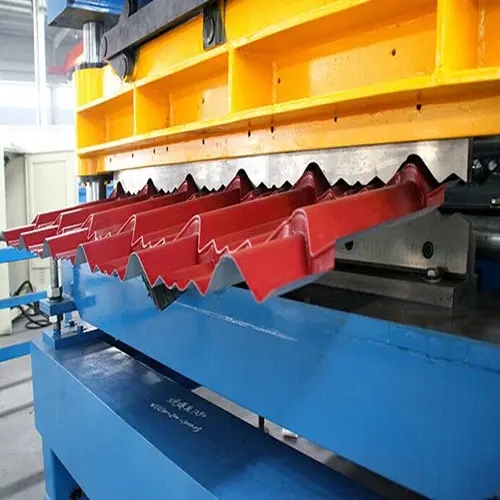
Galvanized Deck Floor Roll Forming Machine Revolutionizing Construction
In the ever-evolving landscape of construction technology, the galvanized deck floor roll forming machine has emerged as a critical innovation, significantly streamlining the process of building reinforced decks. This machine is engineered to create high-quality, precision-formed steel sheets that serve as strong, durable floors for various structures, from commercial buildings to residential homes. The growing demand for cost-effective and robust flooring solutions has propelled the popularity of these machines among manufacturers and contractors alike.
Understanding the Basics
A galvanized deck floor roll forming machine operates on the principle of transforming flat galvanized steel coils into formed sheets that feature a series of ridges and grooves. These depressions enhance the strength and rigidity of the material, allowing it to bear substantial loads. The process essentially involves feeding the steel coils into the machine, where they are rolled and shaped according to specified configurations.
Galvanized steel has a protective zinc coating, which prevents rusting and corrosion, making it an ideal material for construction in various environments. The roll-forming process not only adds structural integrity but also prolongs the lifespan of the flooring components, making them a smart investment for builders aiming for longevity and durability.
Key Features and Benefits
1. High Efficiency The modern galvanized deck floor roll forming machine is designed for speed and efficiency. It can produce a large volume of floor deck sheets quickly, helping manufacturers meet tight deadlines in a fast-paced construction environment.
2. Cost-Effectiveness By utilizing these machines, manufacturers can significantly reduce material waste and labor costs. The automated process minimizes human error and maximizes output, thereby optimizing production costs and increasing profit margins.

3. Customizability One of the most significant advantages of these machines is that they can be customized to produce various profiles and sizes of deck sheets. This flexibility meets the diverse needs of construction projects, allowing builders to choose designs that best suit their specific structural requirements.
4. Enhanced Structural Support The unique ribbed design of the formed sheets provides excellent load-bearing capabilities. The induced stiffness allows for large spans between support beams, making the overall structure lighter and reducing the amount of material needed for supports.
5. Environmental Considerations The use of galvanized steel contributes to sustainable construction practices. Steel is recyclable, and the long lifespan of galvanized products means that they contribute less to landfill waste over time.
Industry Applications
Galvanized deck floor roll forming machines find applications in various sectors of construction. They are prominently used in the creation of floors for warehouses, factories, parking garages, and high-rise buildings. Additionally, with the rise of prefabricated construction methods, these machines have become indispensable in creating components that can be easily assembled on-site, reducing overall construction time.
Conclusion
The galvanized deck floor roll forming machine represents a significant advancement in construction technology, enabling the efficient production of high-quality flooring solutions. With its blend of efficiency, customization, and sustainability, this machine not only meets the demands of modern construction but also helps builders achieve their goals with confidence. As the industry continues to evolve, the adoption of such innovative machinery will undoubtedly play a pivotal role in shaping the future of construction, paving the way for faster, more economical, and resilient building practices.